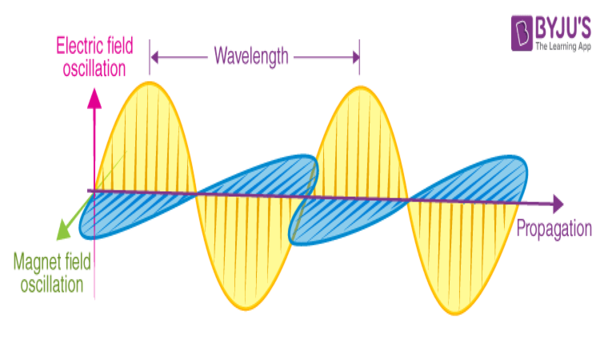Articles and Trivia
Write an articleElectromagnetic radiation

Electromagnetic radiation (EMR) consists of waves of the electromagnetic field, propagating through space carrying momentum and energy. These waves are oscillations of electric and magnetic fields, traveling at the speed of light in a vacuum, denoted as c. The EM spectrum encompasses different wavelengths based on frequency, ranging from radio waves to gamma rays. EM waves interact with matter through acceleration of electrically charged particles, transferring energy and momentum. In quantum mechanics, EMR can be viewed as photons, the quanta of the electromagnetic field, responsible for electromagnetic interactions.
The behavior of EMR is distinguished by the near and far fields. Near fields are localized close to sources, transferring energy efficiently to nearby receivers; they are responsible for phenomena like electromagnetic and electrostatic induction. Far fields extend beyond sources, allowing EM waves to propagate freely without energy loss and are considered as electromagnetic radiation. The power density of EM radiation follows the inverse-square law, decreasing with distance. Maxwell’s equations and quantum theory provide the foundation for understanding EMR, highlighting wave-particle duality. The wave model describes EM waves' propagation as transverse oscillating electric and magnetic fields, where the fields are in-phase and perpendicular to the direction of energy transfer. The interaction of EM waves with matter leads to processes like absorption, emission, interference, and refraction, revealing both wave and particle characteristics of light. Ultimately, EMR plays a crucial role in various natural phenomena, technological applications, and our fundamental understanding of the universe.


